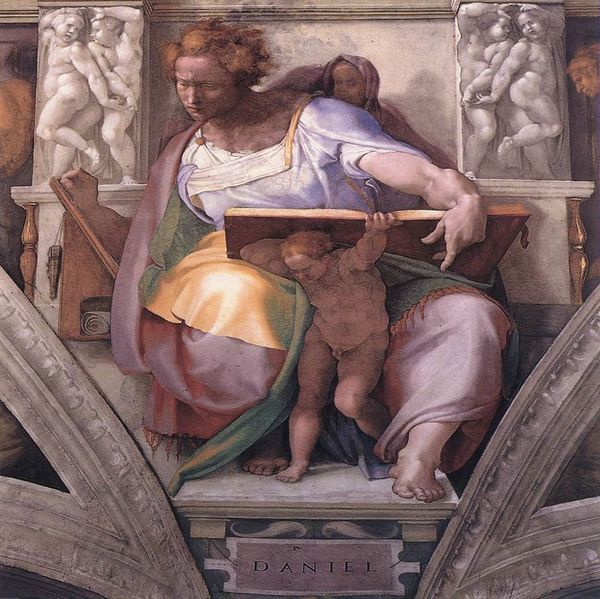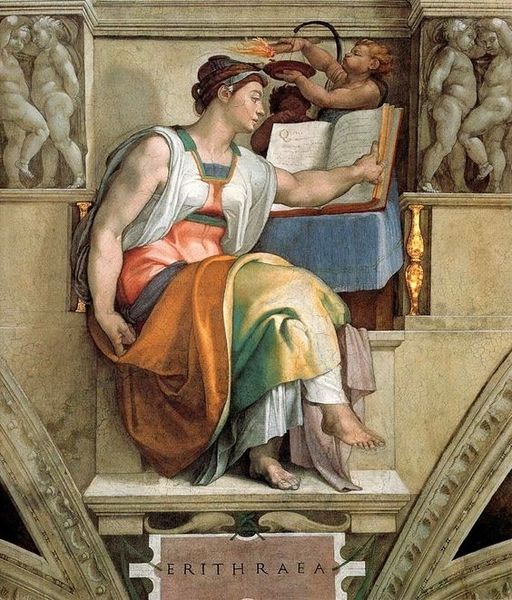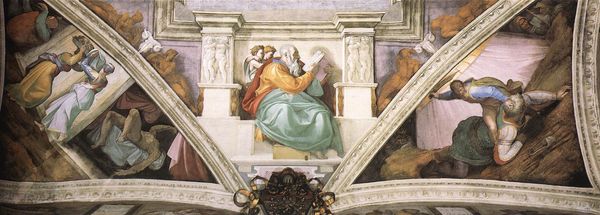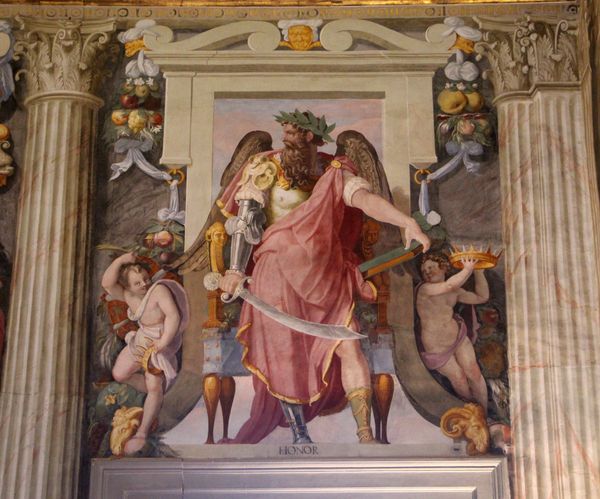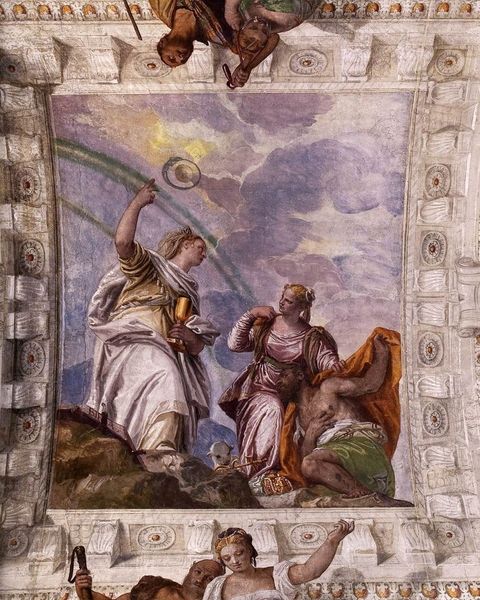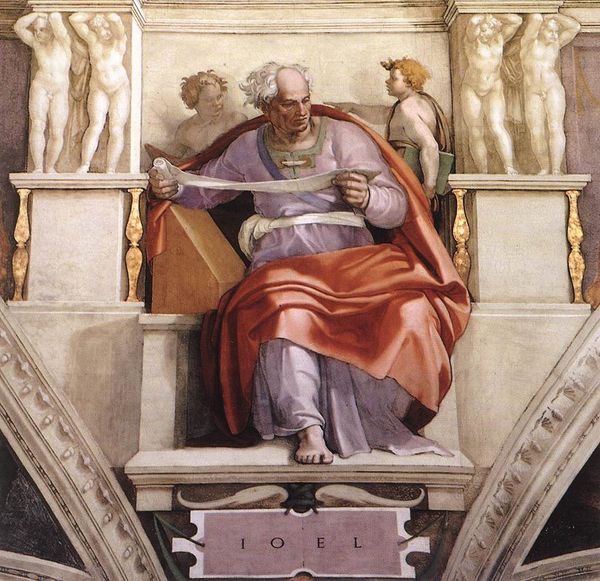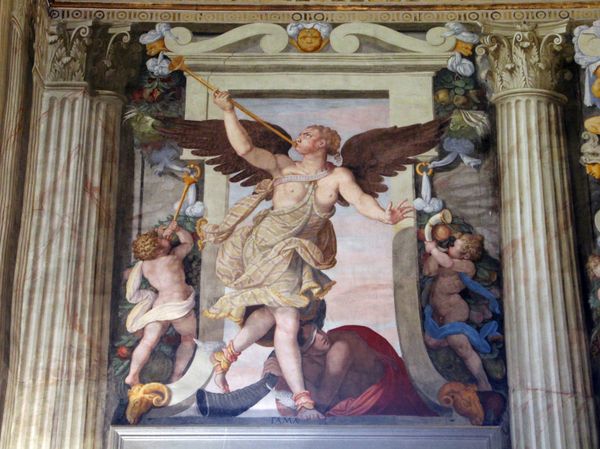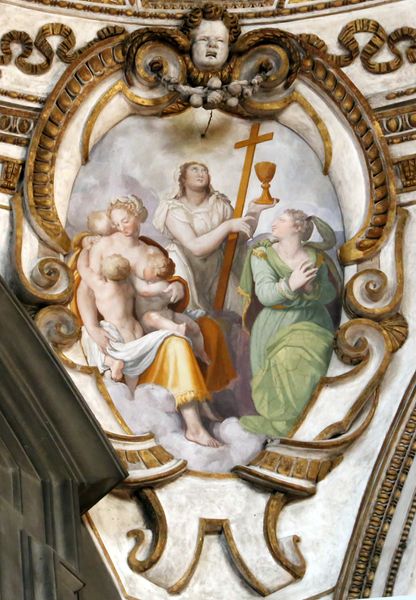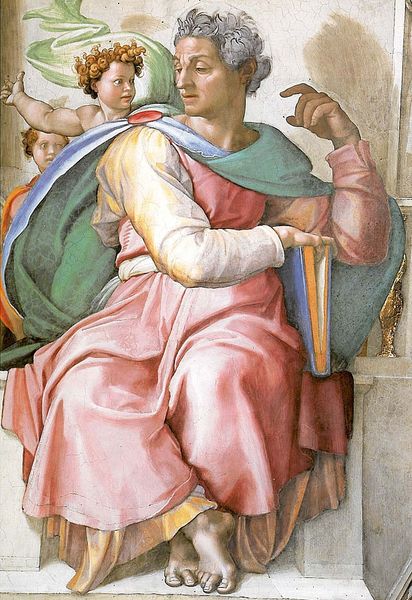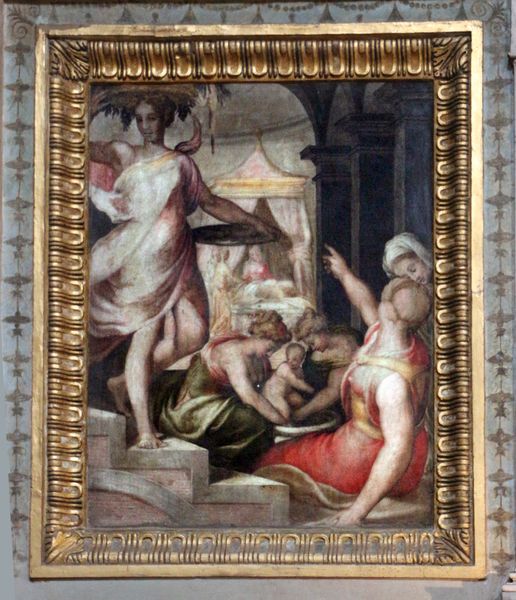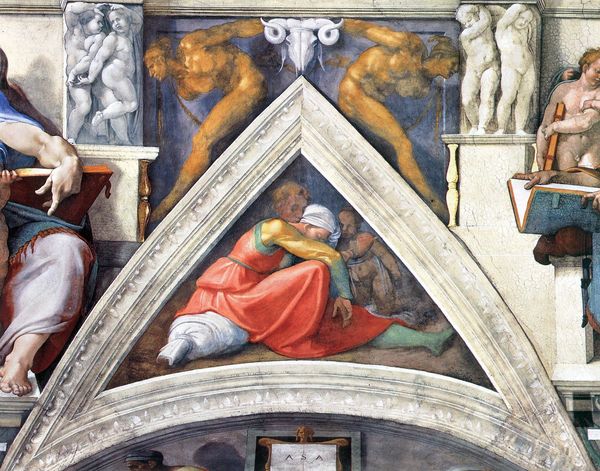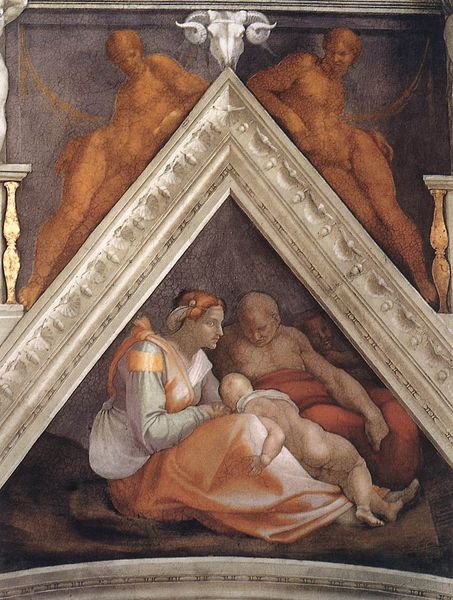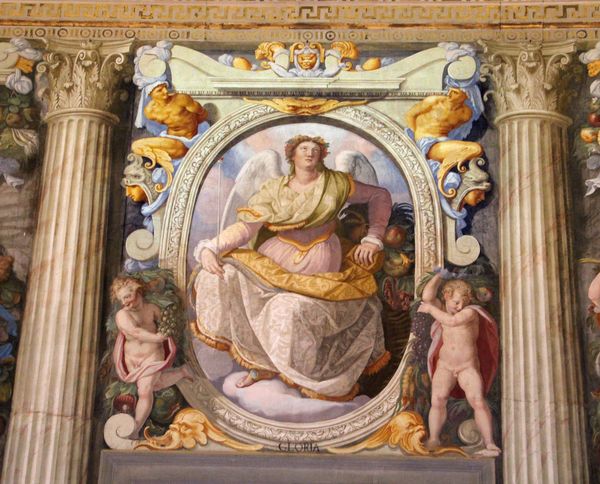Sistine Chapel Ceiling: Libyan Sibyl 1510
🔒Audio guide available with collection purchase
painting, oil-paint
#
portrait
#
high-renaissance
#
allegory
#
painting
#
oil-paint
#
sculpture
#
figuration
#
oil painting
#
roman-mythology
#
mythology
#
painting painterly
#
history-painting
#
italian-renaissance
Dimensions: 395 x 380 cm
Copyright: Public domain
Comments
No comments
Be the first to comment and join the conversation on the ultimate creative platform.

